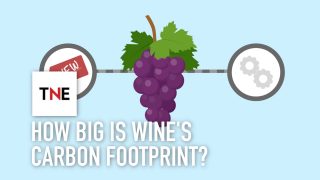
Growing more, using less: how does software crop management work?
Combining software and smart machines is helping farmers achieve triple bottom line results
Show transcriptWith the growing global population, demand for food is rising. But the amount of arable land is decreasing, and its quality is diminishing. Software-driven crop management is one way that farmers can grow more, using less space and fewer natural resources. It also helps farmers preserve soil vitality by applying 21st century technology to one of the oldest innovations in farming: crop rotation. The New Economy explores how software-driven crop management works, and how it can help businesses, consumers, and the planet.
With the growing global population, demand for food is rising. But the amount of arable land is decreasing, and its quality diminishing. Farmers are therefore taking on the challenge of doing more with less – and innovative, cutting edge technologies are the only way to make farms more efficient.
Software-driven crop management is one way farmers are adapting. It lets farmers take control of their fields and manage them more effectively: controlling exactly what’s planted and when, and increasing production in a sustainable way.
Take crop rotation, for example. It’s the key to maintaining soil vitality – planting a variety of different crops keeps nutrients locked into soil for longer – and it’s been standard practice for millennia.
But when you’re managing thousands of hectares of land, how can you tell when it’s underperforming?
Modern combine harvesters – like the equipment produced by New Holland Agriculture – are built with sophisticated sensors. Integrated yield monitors can tell how much crop is being harvested from each square centimetre of the farm. Moisture sensors detect grain moisture – telling farmers how long the crop needs to be dried for storage. This is all fed back in real time – and recorded as yield maps.
These yield maps help farmers monitor productivity – but they also help farmers work more efficiently. When planting, spraying or fertilising, IntelliRate control systems make sure seeds are planted and fertiliser applied exactly where they need to be.
Automated control software can switch off sections in the planter when it detects the tractor is covering sown ground – preventing seed overlaps. It can also vary the rate of application – planting more seeds in areas of land where the soil is richest.
Applying fertiliser or sprays is just as easy. The software can use the farm’s yield maps to focus on areas that need the most help – like soil that needs extra nutrients – and automatically switch off over already applied areas to prevent waste.
Agricultural chemicals and inputs cost a lot of money and resources – and they have to be handled carefully to protect the environment.
But by making use of new technologies and innovations, farmers can grow more while using less – which is good for business, good for the consumer, and good for the planet.
Populations are growing; agricultural land is shrinking. Farmers are on the frontline.
Discover the technology that will help feed our future in Growing Smarter, our latest supplement feature, produced in association with New Holland Agriculture.

